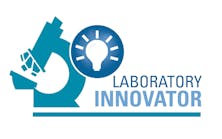Emory Healthcare, of Atlanta, Georgia, recently purchased an automated temperature management system. In the conversation that follows, Medical Laboratory Observer spoke with Cynthia Channell, Manager of Specialty Laboratories for Emory, about the temperature management challenges that all clinical labs face—and about how the automated solutions are working at Emory Healthcare.
Medical Laboratory Observer: What challenges did your lab face with regard to manual temperature management?
Cynthia Channell: It was very time-consuming to take temperatures manually and document corrective actions consistently and correctly, but doing so was vital to our passing College of American Pathologists [CAP] inspections. We must have confidence that our reagents and samples are being stored properly 24 hours a day, and manual temperature tracking does not always allow for real time notification of equipment malfunctions.
How have you solved those challenges?
Channell: The key for us was installing an automated monitoring system, which took a majority of the paperwork away. The Blood Bank had been on an automated system for a while, but the other lab departments were not. We decided a wired system would be more difficult to maintain, because we sometimes move equipment around the lab, so we went onto a wireless system. It is easier to install, and it works for us. Three labs are currently live with the monitoring system, but more than ten have sensors installed, and they will go live soon.
We are monitoring refrigerators, freezers, and incubators as well as room temperature and humidity as instruments have temperature and humidity guidelines from the manufacturer that need to be followed.
How have your temperature management procedures changed as the technology changed?
Channell: We are now able to look at multiple temperatures over time compared to just one temperature point in time that was taken manually. This has enabled us to see a pattern of temperatures on equipment. With the reporting and graphing capability in the software, we can now review equipment cycles and identify whether they are functioning properly. We can see patterns that may signal equipment failure in advance and be proactive on maintenance of that equipment. This has also contributed to a cost savings.
I must admit that initially it was frustrating to learn about poorly functioning equipment, and we wanted to blame the temperature monitoring system for alarming us so often! But through use of the system we learned that sometimes it was actually the equipment. We could also see when we experienced too frequent door-opening instances when the temperature would increase but then go back down rapidly. And we have learned how to adjust the alarm settings based on time of day and how often the equipment is being used.
As of now, how much of your temperature management system is automatic, and what remains in the realm of manual temperature testing and monitoring?
Channell: In the departments that have gone live, we have converted a majority to be automatic, but there are still a couple of unique pieces of equipment that are problematic, and we are testing some new hardware. Those few are still on a manual temperature documentation system.
What is it about your current system that provides you with confidence in temperature management?
Channell: The system is highly user-friendly, and it has the ability to generate many different types of reports that we are able to view over time. This has been invaluable to us with regard to our CAP inspections. It is very important to be able to show CAP these reports—to show that our temperatures and corrective action are well documented.
Can you give any advice to other clinical laboratories whose leaders may be considering transitioning to an automated temperature monitoring system?
Channell: Change is always difficult, and getting buy-in from as many stakeholders as soon as possible is important. You must look at it as another project that requires time to embrace, and the up-front set-up can be labor intensive. The learning curve takes a considerable amount of time, too—to understand alarm intervals, for example. Alarm profiles need to be customized based on equipment, staffing, types of notification, and how alarms are escalated.
During a transitional period, we were using dual systems; this gave us peace of mind. Now, we are comfortable with an automated wireless temperature monitoring system. We can get much more information than before, not just one temperature a day. It's accurate and consistent with excellent reporting capabilities.




